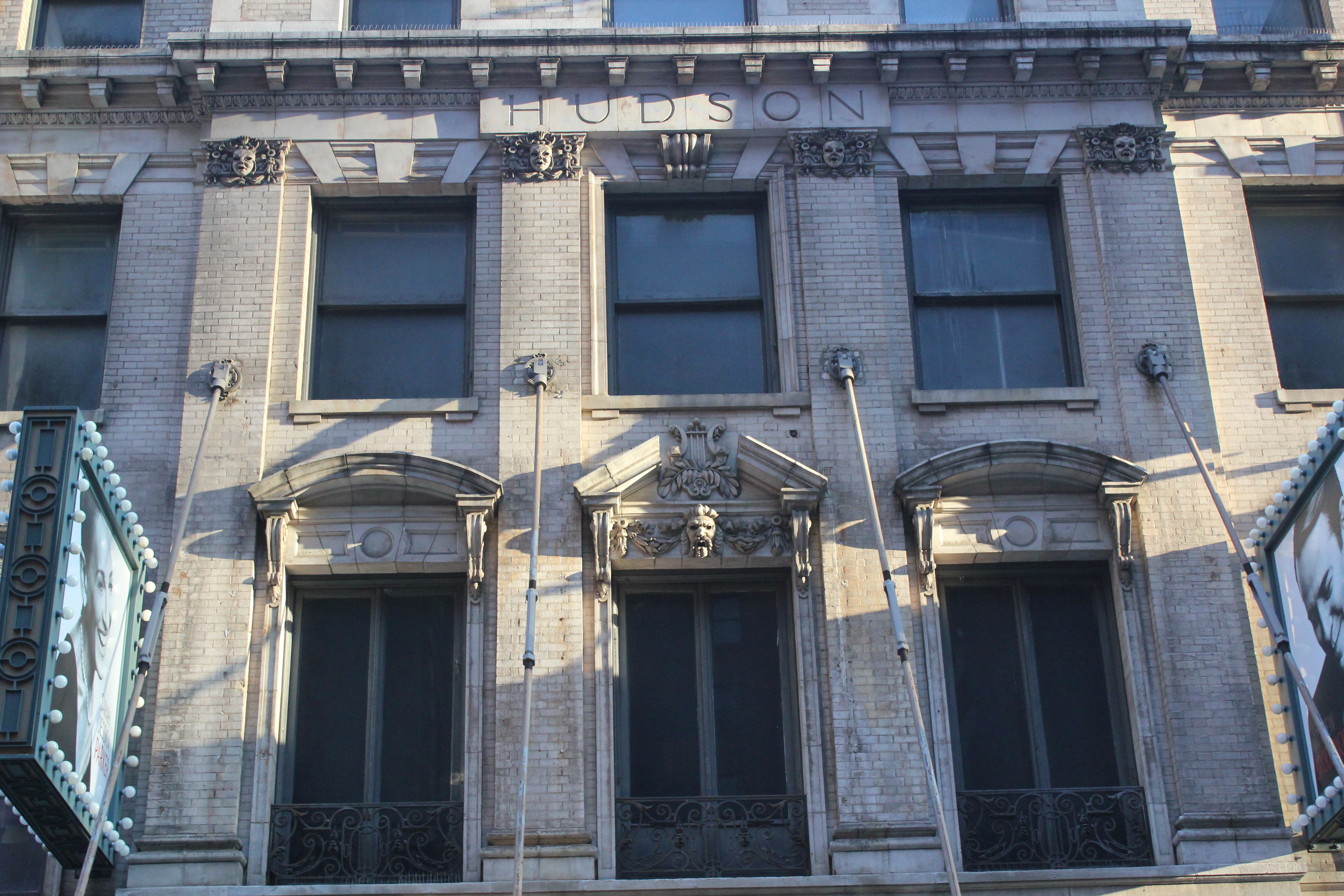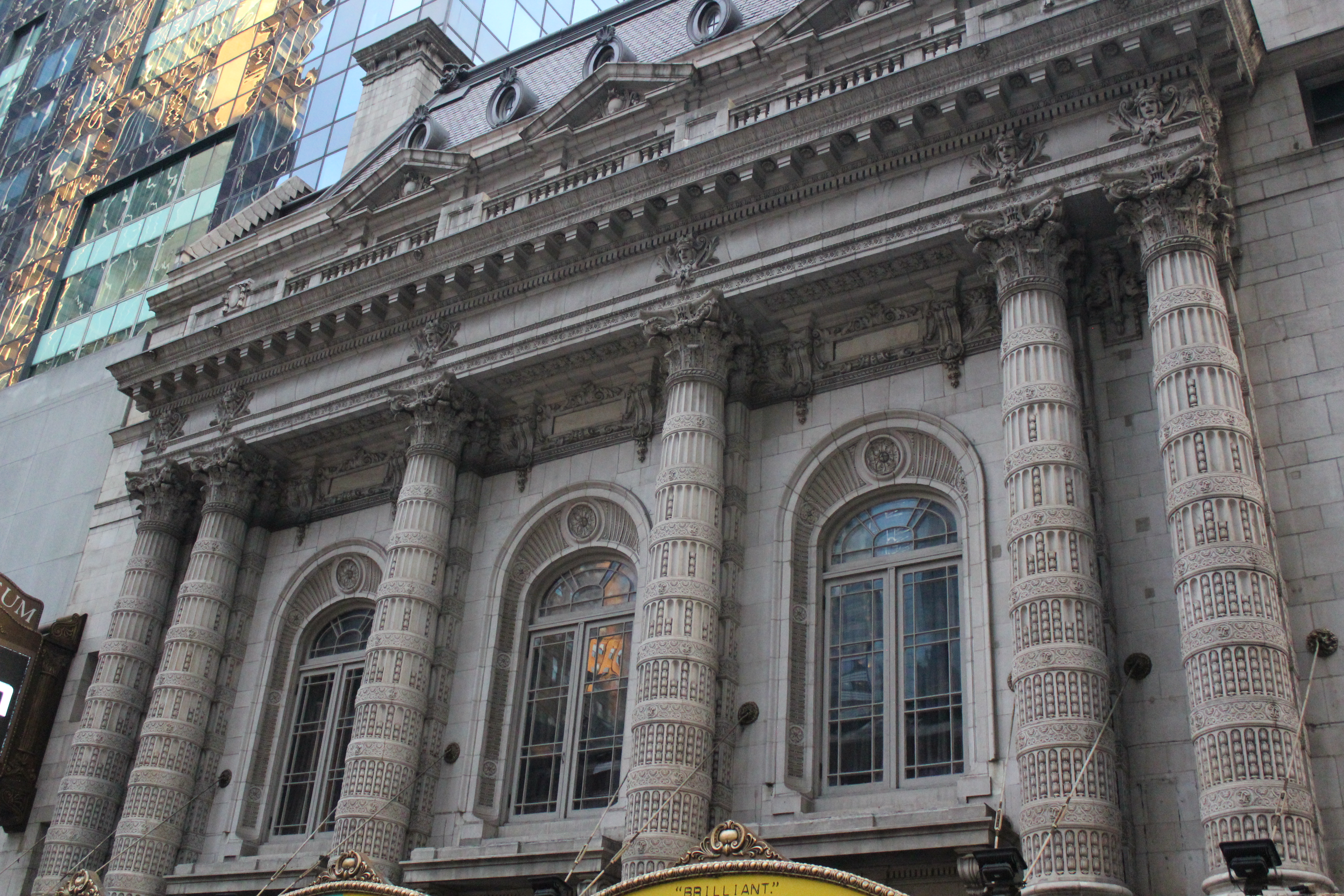|
The Show-Off
''The Show-Off'' is a 1924 stage play by George Kelly about a working-class North Philadelphian family's reluctance to accept their daughter's suitor Aubrey Piper, an overly confident Socialist buffoon. The play has been revived five times on Broadway and adapted for film four times; it is Kelly's most frequently produced play. Production history The characters and basic premise of ''The Show-Off'' first appeared in ''Poor Aubrey'', a one-act vaudeville sketch written by George Kelly that premiered in 1919 and "toured the country before and even during the run of ''The Show-Off''." Expanded into a three-act comedy of manners, the play opened on Broadway on February 5, 1924 at the Playhouse Theatre with Louis John Bartels as Aubrey Piper, Helen Lowell as Mrs. Fisher, and a 25-year-old Lee Tracy making his Broadway debut in the role of Joe. Kelly directed the play himself and demanded that the actors mimic his line readings; Tracy later recalled, "We used to beg elen Lowelldur ... [...More Info...] [...Related Items...] OR: [Wikipedia] [Google] [Baidu] |
George Kelly (playwright)
George Edward Kelly (January 16, 1887 – June 18, 1974) was an American playwright, screenwriter, director, and actor. He began his career in vaudeville as an actor and sketch writer. He became best known for his satiric comedies, including '' The Torch-Bearers'' (1922) and '' The Show-Off'' (1924). He won the Pulitzer Prize for '' Craig's Wife'' (1925). Early life Kelly was born in Philadelphia on January 16, 1887. He was the second youngest of ten children born to Mary Ann (née Costello) and John Henry Kelly, an Irish immigrant. He was the brother of American businessman and Olympic champion sculler John B. Kelly Sr. and the uncle of actress Grace Kelly, who became Princess consort of Monaco, and Olympic rower John B. Kelly Jr. Not much is known about his early life, but he was an actor in his early years. He made his professional stage debut in 1911, and spent the next several years touring in popular stage plays; among them Owen Wister's '' The Virginian''. He di ... [...More Info...] [...Related Items...] OR: [Wikipedia] [Google] [Baidu] |
Hudson Theatre
The Hudson Theatre is a Broadway theater at 139–141 West 44th Street, between Seventh Avenue and Sixth Avenue, in the Theater District of Midtown Manhattan in New York City, New York, U.S. One of the oldest surviving Broadway venues, the Hudson was built from 1902 to 1903. The exterior was designed by J. B. McElfatrick & Son, while Israels & Harder oversaw the completion of the interior. The theater has 970 seats across three levels. Both its exterior and interior are New York City designated landmarks, and the theater is on the National Register of Historic Places. The Hudson Theatre's massing consists of two primary rectangular sections, both of which are clad in tan brick with Flemish bond. The main entrance is through a four-story wing on 44th Street, while the auditorium is housed in the rear along 45th Street. The first story of the 44th Street wing contains an entrance vestibule, ticket lobby, and main lobby, while the other stories contained offices. The auditoriu ... [...More Info...] [...Related Items...] OR: [Wikipedia] [Google] [Baidu] |
Helen Hayes
Helen Hayes MacArthur (; October 10, 1900 – March 17, 1993) was an American actress. Often referred to as the "First Lady of American Theatre", she was the second person and first woman to win EGOT, the EGOT (an Emmy, a Grammy, an Oscar, and a Tony Award), and the first person to win the Triple Crown of Acting. Hayes also received the Presidential Medal of Freedom, America's highest civilian honor, from President Ronald Reagan in 1986. In 1988, she was awarded the National Medal of Arts. The annual Helen Hayes Awards, which have recognized excellence in professional theatre in greater Washington, D.C., since 1984, are her namesake. In 1955, the former Fulton Theatre on 46th Street in New York City's Theater District, Manhattan, Theatre District was renamed the Helen Hayes Theatre. When that venue was demolished in 1982, the nearby Hayes Theater, Little Theatre was renamed in her honor. Helen Hayes is regarded as one of the greatest leading ladies of the 20th-century theatre. ... [...More Info...] [...Related Items...] OR: [Wikipedia] [Google] [Baidu] |
Clayton Corzatte
Clayton may refer to: People and fictional characters *Clayton (name), a list of people and fictional characters with the surname or given name *Clayton baronets *The Clayton Brothers, Jeff and John, jazz musicians *Clayton Brothers, Rob and Christian, painter artists Places Canada * Clayton, Ontario * Rural Municipality of Clayton No. 333, Saskatchewan Australia *Clayton, Victoria **Clayton railway station, Melbourne *Clayton Bay, a town in South Australia formerly known as Clayton * Electoral district of Clayton, a former electoral district in Victoria United Kingdom *Clayton, Manchester * Clayton, South Yorkshire *Clayton, Staffordshire, in Newcastle-under-Lyme *Clayton, West Sussex *Clayton, West Yorkshire * Clayton-le-Dale, Lancashire * Clayton-le-Moors, Lancashire * Clayton-le-Woods, Lancashire United States * Clayton, Alabama * Clay County, Arkansas, formerly "Clayton County" * Clayton, California, in Contra Costa County * Clayton, Delaware * Clayton, Georgia, a city in ... [...More Info...] [...Related Items...] OR: [Wikipedia] [Google] [Baidu] |
The Cherry Orchard
''The Cherry Orchard'' () is the last play by Russian playwright Anton Chekhov. Written in 1903, it was first published by '' Znaniye'' (Book Two, 1904), and came out as a separate edition later that year in Saint Petersburg, via A.F. Marks Publishers.Commentaries to Вишневый сад . The Complete Chekhov in 30 Volumes. Vol. 13. // Чехов А. П. Вишневый сад: Комедия в 4-х действиях // Чехов А. П. Полное собрание сочинений и писем: В 30 т. Сочинения: В 18 т. / АН СССР. Ин-т мировой лит. им. А. М. Горького. — М.: Наука, 1974—1982. Т. 13. Пьесы. 1895—1904. — М.: Наука, 1978. — С. 195—254. On 17 January 1904, it opened at the [...More Info...] [...Related Items...] OR: [Wikipedia] [Google] [Baidu] |
Exit The King
''Exit the King'' () is an absurdist drama by Eugène Ionesco that premiered in 1962. It is the third in Ionesco's "Berenger Cycle", preceded by '' The Killer'' (1958) and ''Rhinocéros'' (1959), and followed by ''A Stroll in the Air'' (1963). Plot In the other plays of the "Berenger Cycle", Berenger appears as a depressed and insecure everyman who is prone to sentimentality. In ''Exit the King'', he is the solipsistic and belligerent King Berenger the First who was apparently at one point able to command nature and force others to obey his will. According to his first wife he is over four hundred years old. He is informed early in the play that he is dying, and the kingdom is likewise crumbling around him. He has lost the power to control his surroundings and is slowly losing his physical capabilities as well. Through much of the play, he is in denial of his death and refuses to give up power. Berenger's first wife, Marguerite, along with the Doctor, tries to make Beren ... [...More Info...] [...Related Items...] OR: [Wikipedia] [Google] [Baidu] |
Lyceum Theatre (Broadway)
The Lyceum Theatre ( ) is a Broadway theater at 149 West 45th Street in the Theater District of Midtown Manhattan in New York City, New York, U.S. Opened in 1903, the Lyceum Theatre is one of the oldest surviving Broadway venues, as well as the oldest continuously operating legitimate theater in New York City. The theater was designed by Herts & Tallant in the Beaux-Arts style and was built for impresario Daniel Frohman. It has 922 seats across three levels and is operated by The Shubert Organization. The facade became a New York City designated landmark in 1974, and the lobby and auditorium interiors were similarly designated in 1987. The theater maintains most of its original Beaux-Arts design. Its 45th Street facade has an undulating glass-and-metal marquee shielding the entrances, as well as a colonnade with three arched windows. The lobby has a groin-vaulted ceiling, murals above the entrances, and staircases to the auditorium's balcony levels. The auditorium has ... [...More Info...] [...Related Items...] OR: [Wikipedia] [Google] [Baidu] |
Jane Seymour (Canadian Actress)
Jane Seymour (born Marjorie Seymour Fitz-patrick; March 24, 1893 – January 30, 1956) was a Canadian-American film and television actress known for her performance in films including playing mom in ''Tom, Dick and Harry The phrase "Tom, Dick, and Harry" is a placeholder for unspecified people. The phrase most commonly occurs as "every Tom, Dick, and Harry", meaning ''everyone'', and "any Tom, Dick, or Harry", meaning ''anyone'', although '' Brewer's Dictionary ...'' (1941) ''The RKO Features: A Complete Filmography'' Neibaur - 1994 and for roles in several TV series. Filmography References External links * * 1893 births 1956 deaths Actresses from Hamilton, Ontario American film actresses American television actresses Canadian emigrants to the United States 20th-century American actresses {{US-screen-actor-1890s-stub ... [...More Info...] [...Related Items...] OR: [Wikipedia] [Google] [Baidu] |
Arena Theatre (New York City)
Arena Theatre () is one of the oldest theatres in Bratislava. It was established in 1828 on the right bank of Danube. In the beginning it served as an open summer amphitheatre, hence the name Arena. The current building was built in 1898. From its establishment till the end of the Second World War, many Hungarian, Austrian and German theatre companies performed there. After the war, the theatre was gradually closed and served as a storehouse for state-owned Slovak Television. The theatre was revived by a group of people around mime artist Milan Sládek, opening performance took place in 1997. The repertoire consisted of several pantomimic performances, an annual pantomimic festival took place there. In 2003, renowned Slovak actor Juraj Kukura became managing director and focus of the theatre shifted to drama. Performance '' The Goat or Who is Sylvia?''co-production with Prague-based The Drama Club was nominated for DOSKY Award 2004 in categories best performance ... [...More Info...] [...Related Items...] OR: [Wikipedia] [Google] [Baidu] |
Harlem
Harlem is a neighborhood in Upper Manhattan, New York City. It is bounded roughly by the Hudson River on the west; the Harlem River and 155th Street on the north; Fifth Avenue on the east; and Central Park North on the south. The greater Harlem area encompasses several other neighborhoods and extends west and north to 155th Street, east to the East River, and south to Martin Luther King Jr. Boulevard, Central Park, and East 96th Street. Originally a Dutch village, formally organized in 1658, it is named after the city of Haarlem in the Netherlands. Harlem's history has been defined by a series of economic boom-and-bust cycles, with significant population shifts accompanying each cycle. Harlem was predominantly occupied by Jewish and Italian Americans in the late 19th century, while African-American residents began to arrive in large numbers during the Great Migration in the early 20th century. In the 1920s and 1930s, Central and West Harlem were the center of the ... [...More Info...] [...Related Items...] OR: [Wikipedia] [Google] [Baidu] |
Lafayette Theatre (Harlem)
The Lafayette Theatre (1912–1951), known locally as "the House Beautiful", was one of the most famous theaters in Harlem. It was an entertainment venue located at 132nd Street and 7th Avenue in Harlem, New York. The structure was demolished in 2013. Early years The Lafayette Theatre was a 1,500-seat two-story theater built by banker Meyer Jarmulowsky that opened in November, 1912. Located at 132nd Street and 7th Avenue, it was designed in the Renaissance style by architect Victor Hugo Koehler, who also designed the two three-story buildings flanking the theater on the corners of 131st and 132nd Streets."Lafayette Theatre. 2227 Adam Clayton Powell Jr. Boulevard, New York, NY 10027." ''www.cinematreasures.org.'' Retrieved June 19, 2019. In 1913 the Lafayette became the f ... [...More Info...] [...Related Items...] OR: [Wikipedia] [Google] [Baidu] |




